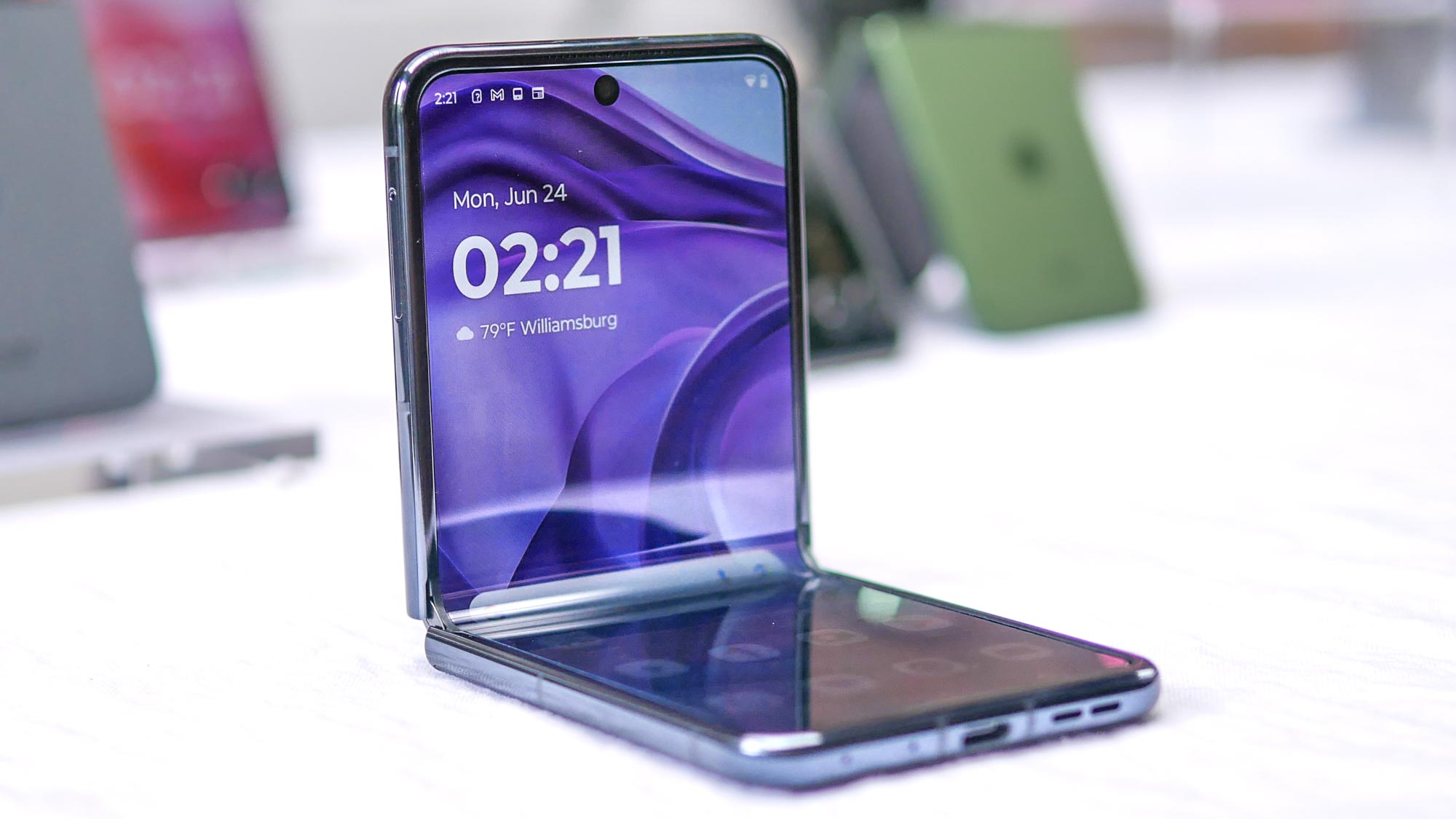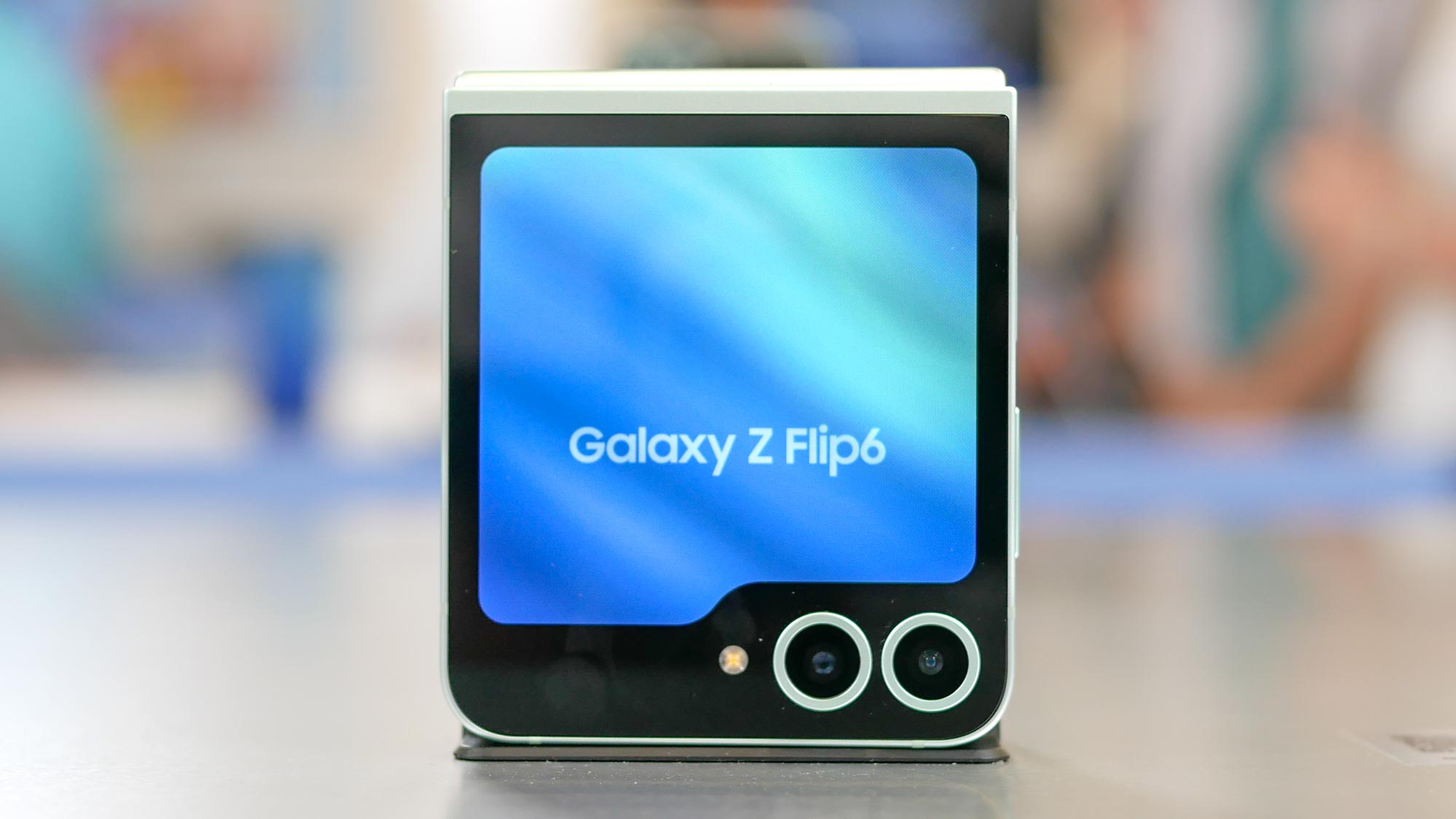Foldable phones have passed a very big milestone to going mainstream
Don't look now, but battery life is getting better on some foldables

If you want to know how crucial battery life is as a selling point for smartphones, consider this fairly recent development: Even foldable smartphones are beginning to focus on lasting longer on a charge.
That may seem like one of the key things a smartphone should do, but it wasn't always the case with the first foldable devices. Those early models emphasized design — rightly so, since the first step in convincing people to buy foldable phones is to convince them that the phones are going to open and shut dependably. Battery life was seen as one of those sacrifices you had to make for a screen that folds in two.
Foldables have larger screens and cover displays to keep powered up and only so much internal space for a battery, the thinking seemed to go. What can you do?
If that was the mindset about foldables a few years ago, it's seemed to change with recent releases, and nothing drives that point home like the performance of Motorola's latest foldable flip phones on our battery test. Both the Motorola Razr Plus (2024) and the Motorola Razr (2024) posted outstanding times, with both claiming spots on our best phone battery life list which recognizes the longest-lasting phones we've tested in the last 18 months. That's the first time that's happened with any flip phone, let alone two. (The OnePlus Open spent some time on our best phone battery life rankings, before other conventional phones surpassed its time of 11 hours and 45 minutes.)
Razr to the rescue

Specifically, the $999 Razr Plus posted a time of 14 hours and 13 minutes on our battery test, where we set the main display of the phone to 150 nits and left it to surf the web over cellular until it runs out of power. The Razr Plus finished a little more than 4 hours ahead of the average smartphone. The less expensive Motorola Razr did even better, with a time of 14 hours and 37 minutes.
There's a caveat to those results, as we achieved them with the refresh rate on both displays locked at 60Hz. Both Razrs have adaptive refresh rates, with the Plus capable of reaching 165Hz while the regular Razr tops out at 120Hz. Fast refresh rates can drain a battery faster, though the fact that both Razrs feature adaptive refresh rates mean that they can go to a slower speed when the action on the screen is static. In other words, when we test those phones with the adaptive refresh rate enabled — and we will — the battery test times could drop, but I don't anticipate them dropping by a large amount.
| Phone | Chipset | Battery size | Battery life (Hrs:MIns) |
| Motorola Razr Plus (2024) | Snapdragon 8s Gen 3 | 4,000 mAh | 14:13 (60Hz) |
| Motorola Razr (2024) | MediaTek Dimensity 7300X | 4,200 mAh | 14:37 (60Hz) |
| Galaxy Z Fold 6 | Snapdragon 8 Gen 3 | 4,400 mAh | Not yet tested |
| Galaxy Z Flip 6 | Snapdragon 8 Gen 3 | 4,000 mAh | Not yet tested |
| OnePlus Open | Snapdragon 8 Gen 2 | 4,805 mAh | 11:45 |
| Google Pixel Fold | Tensor G2 | 4,821 mAh | 10:21 (60Hz) |
| Motorola Razr Plus (2023) | Snapdragon 8 Plus Gen 1 | 3,800 mAh | 10:09 |
| Motorola Razr (2023) | Snapdragon 7 Gen 1 | 4,200 mAh | 10:48 |
| Galaxy Z Fold 5 | Snapdragon 8 Gen 2 | 4,400 mAh | 10:55 |
| Galaxy Z Flip 5 | Snapdragon 8 Gen 2 | 3,700 mAh | 9:53 |
The 2024 editions of the Motorola Razr and Motorola Razr Plus may not be the last foldable phones to make it into our battery life rankings. Samsung has just released the Galaxy Z Fold 6 and Galaxy Z Flip 6, and both of those foldables run on the Snapdragon 8 Gen 3 chipset. That silicon has proven remarkably energy efficient when we've tested it in other phones. Considering that the Galaxy Z Flip 6 also has a slightly bigger battery than its predecessor, we wouldn't be surprised if that phone logs a serious gain in battery life when we get a chance to test it.
Get instant access to breaking news, the hottest reviews, great deals and helpful tips.
Why foldable phones are lasting longer

So what's happening to allow foldable phones to perform better than ever before on battery tests? I think much of the credit goes to the chipsets powering the phones, which are getting better about power management. It's not just the Snapdragon 8 Gen 3, either. The Motorola Razr Plus runs a a variant of that system-on-chip — the Snapdragon 8s Gen 3 — while the Motorola Razr uses a MediaTek Dimensity 7300X. It probably helps that Motorola makes both of those foldables, as that particular phone maker is well-represented on our long-last phone list (five devices of the top 15, as of this writing).
Those chipsets have also gotten more compact compared to the ones that powered the first foldable phones from a few years ago. That's freeing up more space inside the foldable phones, so phone makers can boost battery sizes ever so slightly. Like the Galaxy Z Flip 6, the Motorola Razr Plus (2024) also sports a bigger battery than its 2023 predecessor.
Whatever the reason foldable phones are lasting longer on a charge, it needs to continue the idea of toting around a device with a folding screen is no longer the novelty that it was at the start of the decade, and phone makers like Samsung and Motorola have ironed out the design kinks found in initial releases. We expect foldable phones to be durable by now — and for the prices we're paying for these devices, they had better perform more like conventional handsets when it comes to battery life.
For that reason, it's good to see both new Razr foldables join the ranks of long-lasting phones, just as we're hoping to see the Galaxy Z Fold 6 and Galaxy Z Flip 6 outlast their predecessors. Who knows? It may not be long before ample battery life is par for the course when it comes to the best foldable phones.
More from Tom's Guide
- Motorola Razr 2024 vs. Motorola Razr Plus 2024
- Samsung Galaxy Z Fold 6 AI — 7 best features announced at Unpacked
- This is the coolest Galaxy Z Flip 6 feature no one is talking about — and it’s not AI
Philip Michaels is a Managing Editor at Tom's Guide. He's been covering personal technology since 1999 and was in the building when Steve Jobs showed off the iPhone for the first time. He's been evaluating smartphones since that first iPhone debuted in 2007, and he's been following phone carriers and smartphone plans since 2015. He has strong opinions about Apple, the Oakland Athletics, old movies and proper butchery techniques. Follow him at @PhilipMichaels.

